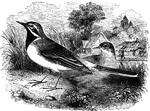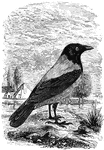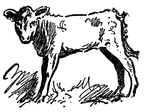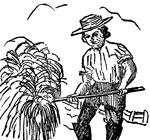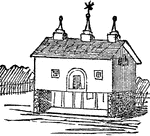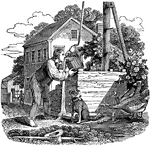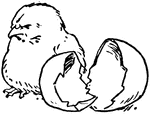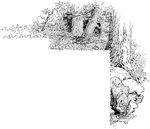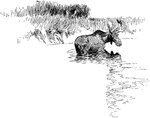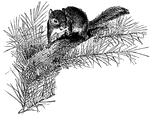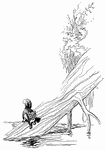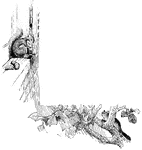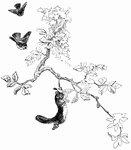
Battle-ground
This view is taken from near the house of Mr. Neilson, looking northwest. In the foreground, on the…
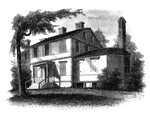
Liberty Hall
Liberty Hall. Some time after the death of Governor Livingston this property was purchased by Lord Blingbroke,…
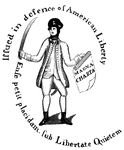
Treasury Note
"Reverse of a Massachusetts Treasury note. This is a fac simile of the device on the back of one of…

Dining-Hall
"The dining-hall, or room with seven doors. In the December number of the New York Mirror for 1834,…
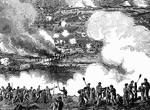
Battle of White Oak Swamp Bridge
"Battle of White Oak Swamp Bridge, Monday June 30th, 1862- Ayres's, Mott's and Randall's batteries checking…

Battle of White Oak Swamp Bridge
"Battle of White Oak Swamp Bridge, Monday June 30th, 1862- Ayres's, Mott's and Randall's batteries checking…
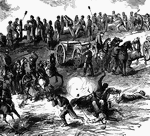
Battle of White Oak Swamp Bridge
"Battle of White Oak Swamp Bridge, Monday June 30th, 1862- Ayres's, Mott's and Randall's batteries checking…
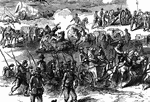
Battle of White Oak Swamp Bridge
"Battle of White Oak Swamp Bridge, Monday June 30th, 1862- Ayres's, Mott's and Randall's batteries checking…
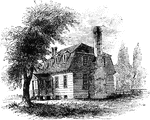
Moore's House
"This is a view from the lawn, looking south. It is a frame building with a brick foundation. At the…
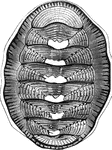
Chiton chilensis
"The Chiton Chilensis has a smooth border; it is found in crevices of rocks under stones, near…

Henry VIII
"Henry VIII (1509-1547) came to the throne in 1509, inheriting a vast treasure which he owed to the…

stockade
"A stockade. Those settlers who lived outside of Roston and the few seaport villages built palisades…
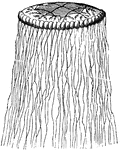
Cuvieria carisochroma
"Which is without a central peduncle, yet has numerous long appendages hanging from its border." —…
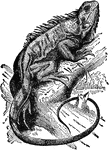
Iguana
"Iguana is a genus of saurian reptiles, natives of Brazil, Cayenne, the Bahamas, and neighboring localities…

Surface of a nail
"Concave or Adherent Surface of the Nail. A, border of the root; B, whitish portion…

Aegis
"signifies, literally, a goat skin. According to ancient mythology, the aegis worn by Jupiter was the…
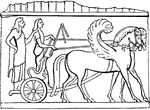
Antyx
"The rim or border of anything, especially of a shield or chariot. The trim of the large round shield…
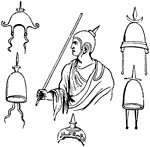
Apex
"A cap worn by the flamines and salii at Rome. The essential part of the apex, to which alone the name…
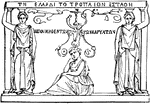
Caryatides
"Caryae was a city in Arcadia, near the Laconian border, the inhabitants of which joined the Persians…
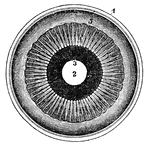
Human Eye
The iris and adjacent structures seen from behind. 1, the divided edge of the three coats, the choroid…
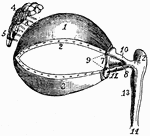
Eye Muscles
1, cartilage of the upper eyelid; 2, its lower border, showing the openings of the Meibomian glands;…
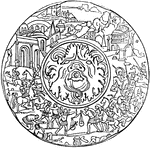
Parma
"A round shield, three feet in diameter, carried by the celites in the Roman army. Though small, compared…
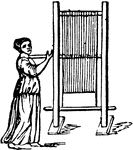
Tela
"Tela, a loom. Although weaving was among the Greeks and Romans a distinct trade, carried on by a separate…
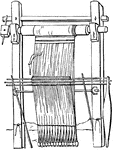
Tela
"Tela, a loom. Although weaving was among the Greeks and Romans a distinct trade, carried on by a separate…
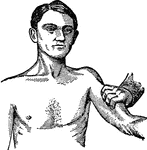
Branchial compression
"In bleeding from any part of the arm or hand the branchial artery should be pressed outwards against…
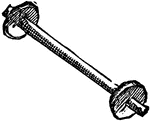
Bobbin
A small cylindrical piece of wood or metal with a border at one or both ends, on which thread is wound;…

Triangular coop
"This triangular shape is a good one also for a movable poultry-house in its simplest form." —…

Triangular coop
"This triangular shape is a good one also for a movable poultry-house in its simplest form." —…
